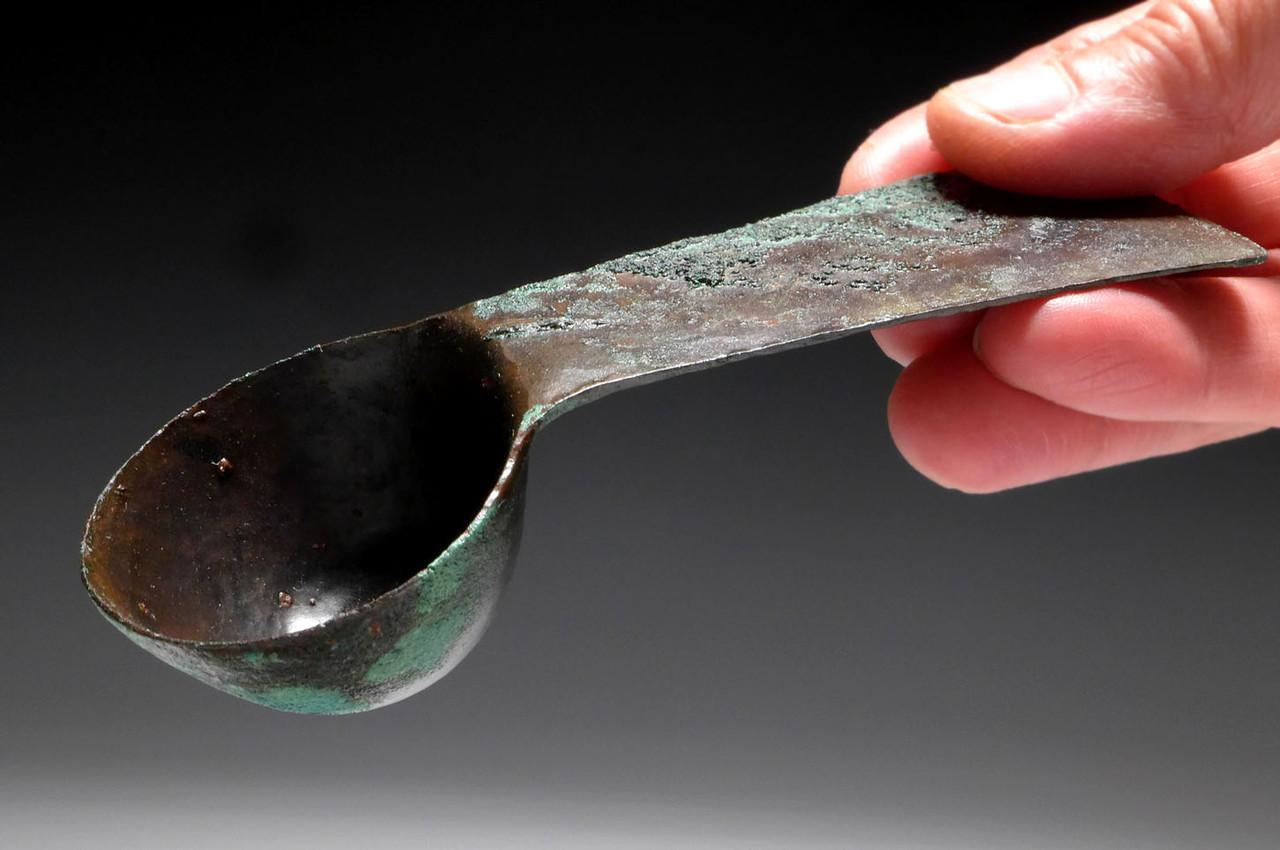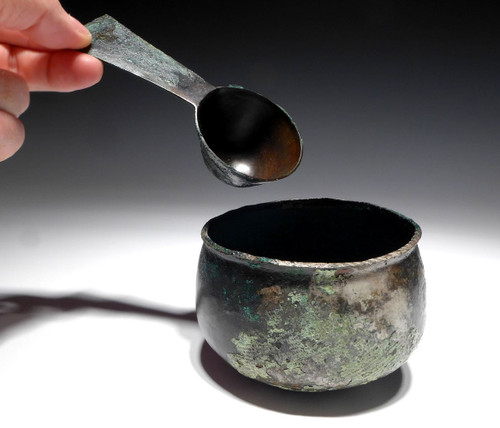Product Description
SEE MORE PRE-COLUMBIAN ARTIFACTS
This is a VERY RARE ancient copper bowl and ladle set from the ancient Pre-Columbian Moche Indians of South America. Metal ware such as this were strictly reserved for only the wealthiest elites of society. While the Moche are famous for their ceramics, it is their metal craft that is increasingly of interest as the skill required to create these objects is perhaps some of the finest the world has ever known. Many of the ancient Moche techniques are still difficult today for modern metalsmiths to duplicate!
An original set, the decorative copper hammered bowl features low squat profile and a flat rim embellished with an incised decoration. The ladle spoon is purportedly original to the bowl and shows identical patina and colorful mineral encrustations. Evidence of traces of fibers can be seen in the bowl and on the underside.
This is one of only two rare original Moche metalware sets we have offered in over 22 years! Presence of metal-worked goods is thought to have been especially significant with respect to the highest-ranking members of society making them extremely rare!
HISTORY
The Moche civilization, or the Mochica culture, flourished in northern Peru with its capital near present-day Moche, Trujillo, Peru. They thrived from about 100 to 700 AD during the Regional Development Epoch. Moche society was agriculturally based, with a significant level of investment in the construction of a sophisticated network of irrigation canals for the diversion of river water to supply their crops. The Moche are particularly noted for their elaborately painted ceramics, gold work, monumental constructions (huacas), and irrigation systems.
Both iconography and the finds of human skeletons in ritual contexts seem to indicate that human sacrifice played a significant part in Moche religious practices. These rites appear to have involved the elite as key actors in a spectacle of costumed participants, monumental settings and possibly the ritual consumption of blood. The tumi was a crescent-shaped metal knife used in sacrifices. Excavations in plazas near Moche huacas have found groups of people sacrificed together and the skeletons of young men deliberately excarnated, perhaps for temple displays.
The Moche may have also held and tortured the victims for several weeks before sacrificing them, with the intent of deliberately drawing blood. Some parts of the victims may have been eaten in ritual cannibalism. The sacrifices may have been associated with rites of ancestral renewal and agricultural fertility. Moche iconography features a figure which scholars have nicknamed the "Decapitator"; it is frequently depicted as a spider, but sometimes as a winged creature or a sea monster: together all three features symbolize land, water and air. When the body is included, the figure is usually shown with one arm holding a knife and another holding a severed head by the hair; it has also been depicted as "a human figure with a tiger's mouth and snarling fangs". The "Decapitator" is thought to have figured prominently in the beliefs surrounding the practice of sacrifice.
 US DOLLAR
US DOLLAR
 EURO
EURO
 AUSTRALIAN DOLLAR
AUSTRALIAN DOLLAR
 CANADIAN DOLLAR
CANADIAN DOLLAR
 POUND STERLING
POUND STERLING
























